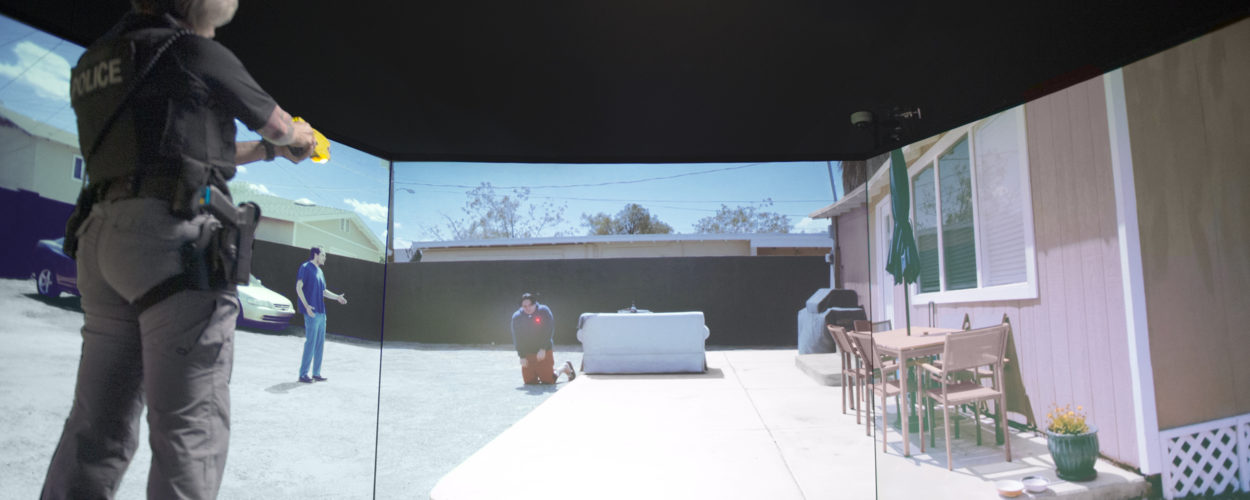
These are unprecedented times for law enforcement. In some jurisdictions, the ink has not dried on new “use of force” reforms before additional new restrictions are introduced. Most of these changes are being implemented without adequate consideration for the training necessary to reasonably influence widespread changes in human (officer) performance. While some legislators may not realize it, we instructors know that developing and maintaining proficiency in any skill set requires training time. The amount and type of training is dependent on the type of skill and the level of proficiency we wish to attain.
Training Type
The idea of developing proficiency in any skill should be first evaluated based on the complexity behind its successful application. For instance, a law enforcement officer’s use of a handgun requires the coordination of bilateral motor skills in the arms and legs, significant hand-to-eye coordination, and fine motor development within the hands and fingers. To facilitate these skills, police academies may provide more than 100 hours of training while agencies provide 8 -16 hours a year (more or less) maintaining proficiency. Yet, contemporary research on real-world shooting accuracy of police indicates officers hit their intended target about 50 percent of the time. This is up from a 20-30 percent accuracy rates reported in some older studies.
Long ago, instructors realized the development of firearms skills on a static square range was inadequate for real-world performance. Subsequently, trainers accepted a “train like you fight” ideology while endeavoring to enhance student proficiency through dynamic movement or combat-oriented range trainings. Today, movement and combat related shooting have become an element of “best-practices” in developing skilled firearms practitioners. However, developing proficiency in firearms accuracy and combat skills may be the easiest aspect of training the use of deadly force.
Unfortunately, much less attention and time is spent on the arguably more difficult task of developing the cognitive aspects of use of force involving a handgun. What are the “cognitive development aspects of use of force” you ask? In this context, cognitive development training requires officers to comprehend and correctly apply federal and state law as well as applicable policies on the use of deadly force. An essential skill necessary for appropriate use of force decision-making.
To that end, compare the 100 or more hours of practical firearms training to the 15 to 20 hours academies spend focused on training the legal standards. Then compare the 8-16 hours some police agencies spend per year in maintaining firearms skills to the handful of hours spent training law or policy. Even then, many agencies conduct “training” law and policy using static methods (i.e., reading the policy) rather than through realistic stress-based applications. Therefore, it may be time to apply a “train like you fight” ideology to the use of deadly force by incorporating decision-making skills through realistic decision-making training.
The Science on Simulator-Based Training
The research on use of force simulators is still emerging, but the results are compelling. In regard to training and maintaining firearms skills: a series of studies have demonstrated the simulator or combinations of simulator and live-fire training has produced qualification scores equivalent to those in live-fire only training. More importantly, other studies have demonstrated that training with the simulator can increase officer’s situational awareness and decision-making. Some of these studies have also found student officer’s overwhelmingly report simulator training to be beneficial to their performance.
One reason the simulator may have demonstrated success is due to its proven ability to increase participant’s physiological arousal (i.e., fight-or-flight response). In fact, studies have shown that student officers experience some of the same perceptual distortions found within real-world officer-involved-shootings (OIS). The distortions include not seeing or hearing certain details of an incident or failing to remember or remember correctly what occurred during the simulation.
Training for Real World Proficiency
As a use of force instructor for many years, I have had the opportunity to train hundreds of officers in simulated violent encounters. In many cases, officers demonstrate visible signs of physiological arousal (i.e., rapid carotid pulse, heavy breathing) and associated performance deficits. While the actual use of force is typically correct, errors in officer safety, verbal commands, weapon transitions, and the failure to activate a body-worn-camera are not unusual. Multiple evolutions of training have developed better performance in these areas and have also enhanced the articulation of the legal and policy requirements linked to the force used. The takeaway is the simulator provides an opportunity to identify and correct performance shortfalls that can have significant repercussions during or after a critical incident.
Conclusion
Today, we are seeing an increase in multi-million-dollar lawsuits linked to OIS. We are also seeing an unprecedented number of officers charged with excessive use of force. The associated influence on police legitimacy should be concerning to all. Therefore, the historical excuses (i.e., money, time) for failing to train effectively are of a secondary concern. The development of a strong use of force/de-escalation program is a critical component necessary for law enforcement agencies to face the challenges ahead. The time is now to enhance real-world proficiency using evidence-based methods such as simulators. But how?
Stay tuned for my next article that will discuss the development of a strong use of force/de-escalation simulator program.
Be Safe/Be Vigilant
Author:
David Blake, Ph.D., is a retired California peace officer and a court-certified expert on human factors psychology and police practices with a focus on officer-involved-shootings. Dave has taught use of force and human factors concepts to stakeholders throughout the country while actively engaged in research meant to enhance the profession.
Dave owns Blake Consulting & Training. He can be reached at [email protected]
Recently Published
Join Our Newsletter







